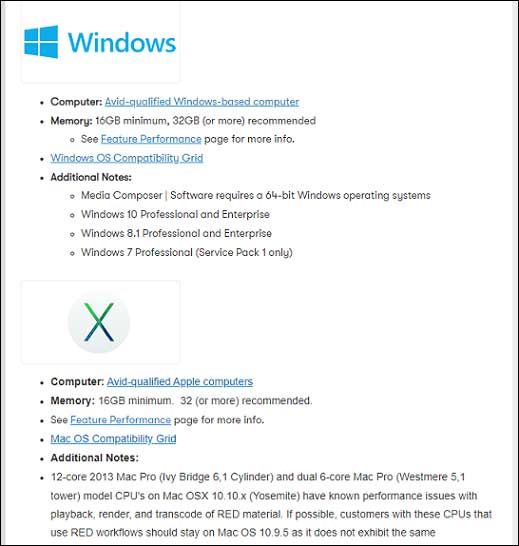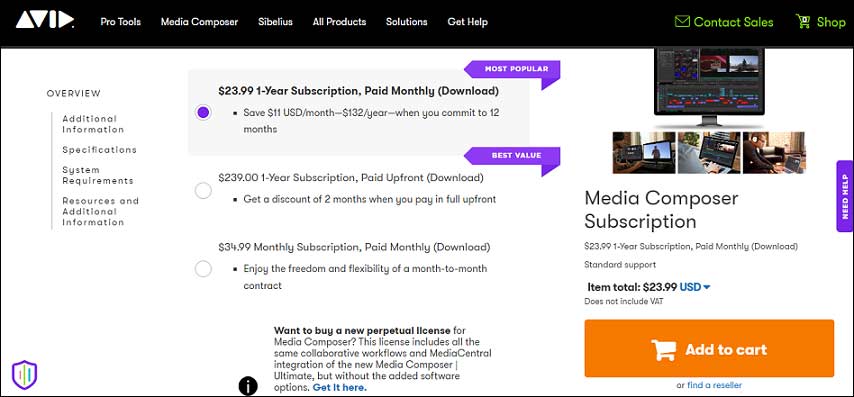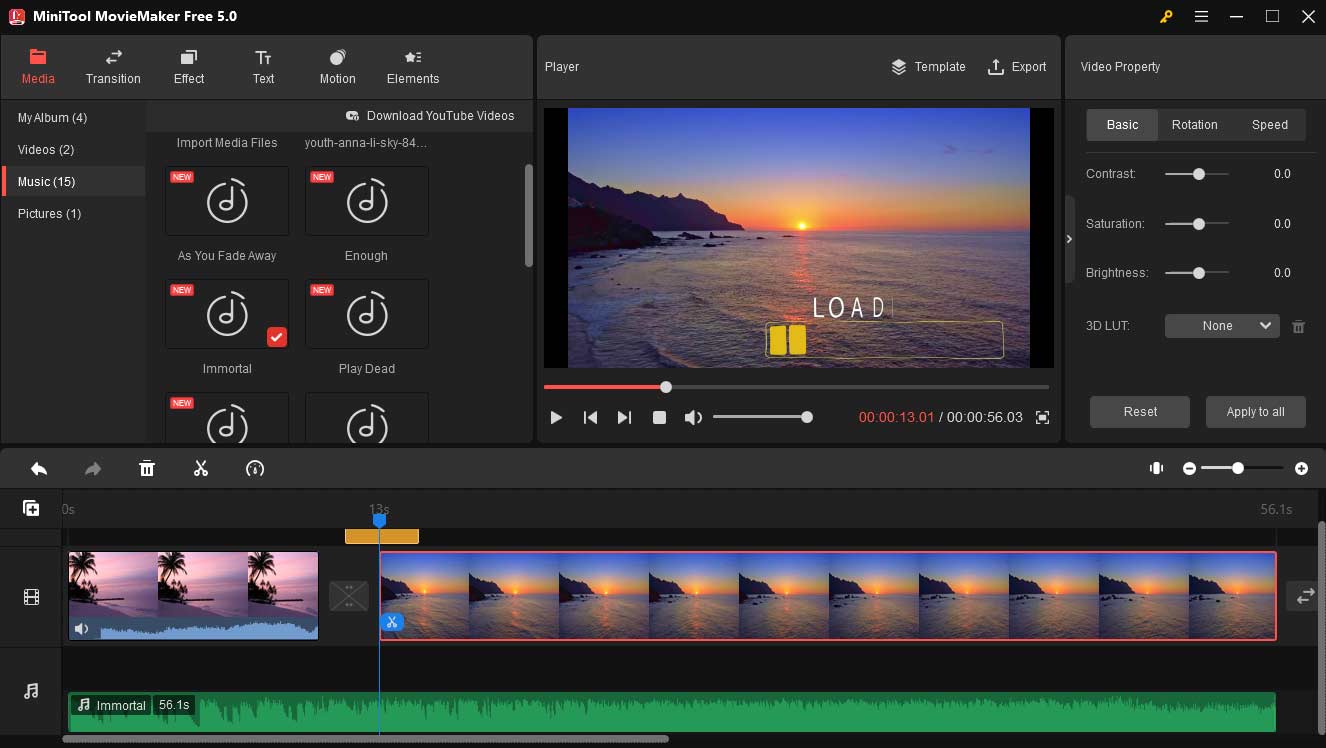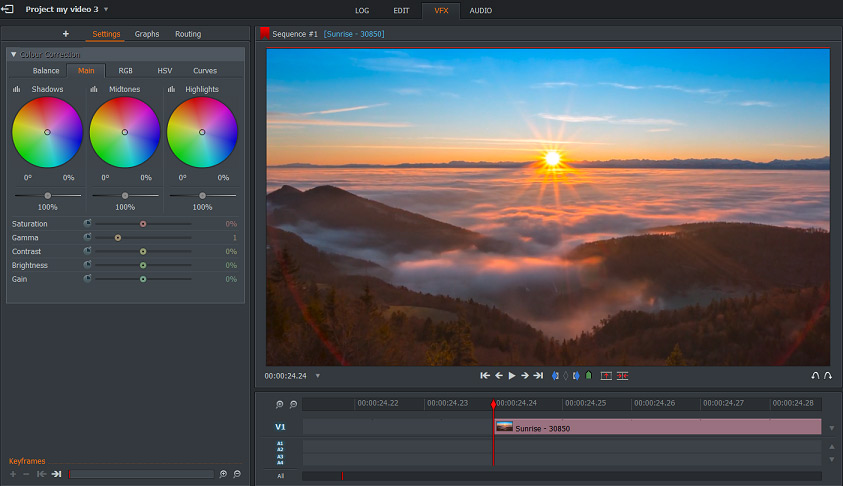If you want to buy professional video editing software, Avid Media Composer and Adobe Premiere Pro may rank highly among the options. Which is better Avid or Premiere Pro? In this post, we are going to offer the ultimate Avid Media Composer vs Premiere Pro comparison for you. Hope this guide can help you make a good choice.
Avid Media Composer and Adobe Premiere Pro are both professional non-linear video editing programs designed for professional video editing. Both of these platforms have a huge base of loyal users. How about their differences? Avid Media Composer vs Premiere Pro, which is better? Is Avid better than Premiere?
In this article, we will compare Avid Media Composer vs Premiere Pro in different aspects. We will also introduce some great tools as alternatives (including MiniTool MovieMaker).
MiniTool MovieMakerClick to Download100%Clean & Safe
Avid Media Composer VS Premiere Pro
Avid Media Composer and Adobe Premiere Pro share similarities and differences. These two programs are the leaders in the video post-production industry. They both contain professional-grade and powerful video editing tools and they’ve been used to edit big movie blockbusters.
To differentiate between these two programs, we will need to look at how they function at a deeper level. We’ve observed them in 6 different aspects: interface, system requirement, color correction, price, audio editing, and project sharing.
Avid Media Composer VS Premiere Pro: Interface
Avid Media Composer’s interface includes a project folder on the left, a playback panel on the right, and the timeline running across the bottom. The tools are on the right. Most of these can be accessed through keyboard shortcuts. All of the panels can be customized to fit your personal editing style.
Avid’s timeline is much bigger than Premiere’s. With a bit of a learning curve when it comes to figuring out the design and presets.
Premiere Pro’s interface is similar to Avid’s. You can see the project panel in the bottom left with the effects and all media imported to the project. The upper left panel is the source panel where you can view media and manipulate the effects.
The timeline is at the bottom right, with the tools next to it, which are accessed by keyboard shortcuts. The upper right panel contains the playback panel where edits can be viewed. You can toggle between different interfaces on the top.
At first glance, both programs may look foreign to a beginner. While Adobe’s sleek design might be easier to use for the novice.
Avid Media Composer VS Premiere Pro: System Requirement
Both Avid Media Composer and Premiere Pro work well with Windows and macOS systems. Here are the details:
Avid Media Composer:
- For the Windows PC, Avid Media Composer system requirements are Enterprise and Professional Windows 10, Windows 8.1, or Professional Windows 7 Service Pack 1. A minimum of 8GB RAM is needed but 16GB or more is recommended. To work in a collaborative atmosphere, on large projects, or with UHD, 24GB or more is recommended.
- For macOS, Avid Media Composer System requirements are macOS X 10.10.x, 10.11.x, 10.12.x. A minimum of 8GB RAM is needed but 16GB or more is recommended. To work in the multi-workstation atmosphere, on large projects, or with UHD, 24GB or more is recommended.

Premiere Pro:
- Premiere Pro, for Windows, the requirements are Windows 10 64-bit version 1909 or newer. A minimum of 8 GB of RAM is needed. 16 GB of RAM for HD media and 32 GB or more for 4K and higher.
- For macOS, the system requirement is macOS v10.15 (Catalina) or later. A minimum RAM of 8 GB is needed. 16 GB of RAM for HD media and 32 GB for 4K media or higher. 4 GB of GPU VRAM is needed.
Avid Media Composer VS Premiere Pro: Color Correction
Both Avid Media Composer and Premiere Pro contain effective color correction tools and features.
With Premiere Pro, you can access different wheels and curves that help manipulate the overall image, as well as each hue, contrast, exposure, saturation, and more. It also provides a color picker tool for isolating color. It also allows you to link your footage to After Effects for automatic updates.
Avid Media Composer’s color correction tools and features are similar to Premiere. With Avid, you have access to the waveform, color wheels, and curves as well. While Avid does not support transferring your footage to a compositing platform.
Avid Media Composer VS Premiere Pro: Price
For the comparison of Premiere Pro vs Avid Media Composer price, the details are as follows:
Avid Media Composer:
- Avid provides a free version – Media Composer First that targets non-commercial users. The Media Composer costs $34.99 per month for a monthly subscription and $23.99 per month for a one-year subscription. You can also pay upfront $239.00 for the one-year subscription. It will cost $1,999 for the perpetual license with a one-year software update and support plan.

Premiere Pro :
- Premiere Pro costs $20.99 per month. The annual plan costs $ 239,88 per year. If you plan to try it out monthly, the amount is $31.49.
Avid Media Composer VS Premiere Pro: Audio Editing
The audio editing in Avid Media Composer vs Premiere Pro is also an important aspect we may consider.
Avid Media Composer is often used on high-budget and large productions. The features allow the audio to be edited onto a professional mixer or advanced sound designer for top-quality finishing. therefore, the audio engineering capabilities of Avid are outstanding.
Premiere Pro does come with some really useful audio editing features as well, with multiple methods of accomplishing the same effect for different users. However, by comparison, it may not offer quite the same level of functionality as Avid Media Composer.
Avid Media Composer VS Premiere Pro: Project Sharing
As we’ve already mentioned above, Avid Media Composer is the go-to video editing software for high-budget productions. Big projects need multiple editors to get the job done, and Media Composer makes it easy to do that by sharing assets. Avid Bin Locking and Media Asset Management tool allows any number of users to work on the same project and enhance the workflow through collaboration and teamwork.
Premiere Pro also allows for collaboration and team sharing. There are a few ways to do this. The most simple and effective way method of project sharing is via creative cloud account sharing.
Which One Suits You Most?
In the above parts, we have a comparison of Avid Media Composer vs Premiere Pro in 6 aspects: interface, system requirements, color correction, price, project sharing, and audio editing. In some aspects, we’re calling it a tie. In another aspect, one may be better than the other.
Is Avid Media Composer better than Premiere Pro? Or is Adobe Premiere Pro better than Avid editing software? In fact, as we see the comparison, we can find that both the two programs excel in some facet.
Avid Media Composer may be best suited for professional editors or filmmakers. It is a great all-in-one editing platform for filmmakers to realize their creative vision. On the other hand, Premiere Pro may be best suitable for editors and content creators who look for quick and seamless edits and churn out high-quality content.
Also read: Top 10 Must-Have Apps for Filmmakers [Ultimate Guide]
Best Alternatives to Avid Media Composer and Premiere Pro
The above part covered the comparison of Adobe Premiere vs Avid Media Composer. They are both professional video editing tools with advanced video editing features. If you think the two programs are too complicated for you, the following part covers several handy video editing tools.
MiniTool MovierMaker (Windows)
If you are just stepping into the world of video editing and want an easy-to-use video editing program, MiniTool MovieMaker is our first recommendation as an alternative to Avid editing software and Adobe Premiere Pro.

As we can see from the screenshot of its interface, all its features are well-structured and easy to find, it is perfect for beginners to create high-quality videos easily. It is a simple, clean, no bundle, and no watermark video editing application for Windows.
You can use it as a video editor and video maker. As a video maker, you can import images, audio, and video clips to the timeline and use its drop-and-drag functionality to rearrange and customize them easily. It supports importing a variety of media formats. So, you can even use it as a video player.
As for video editing, it supports video rotating, flipping, splitting, trimming, reversing, speed changing, and more. To make your videos more attractive and impressive, you can apply pretty transitions, filters, and motion effects to your videos. You can also add animated elements to your videos too.
It also provides a color correction tool and 3D LUT effects. Additionally, you can use its audio editing tools such as volume adjustment, audio merging, audio fading-in or fading-out effects, and extracting audio from the video.
VSDC Video Editor (Windows)
VSDC is also a great intuitive yet powerful video editing software designed for Windows. Because it is free software, you will never worry about the trial period, payment, or subscription.
To make your videos more eye-catching, the video effects library offers stunning transformation effects, filters, color correction, and special effects. Amazingly, you can produce your custom video effects and filters by combining those available within the software.
It also offers a collection of useful features including a nonlinear editor, masking, video stabilization tool, and support for 4K and HD exports. The masking feature lets you blur, hide, or highlight objects in your video clips. To enhance the footage, the video stabilization tool can help to remove camera shake effects or jitters produced by the movement of the camera.
In addition to editing the visual videos, it also allows you to edit the audio in your videos. It features audio editing tools like volume correction, sound normalization, reverberation, echo, and equalizer. You can also add effects to audio tracks in your videos with ease.
Lightworks (Windows, macOS, Linux)

Featuring a clear and intuitive user interface, Lightworks allows you to make quick video edits for YouTube, and video montage, and publish videos on the web easily. It will give your video footage a professional look using the drag and drop techniques. With Lightworks, you can use its color grading and blending, real-time effects, advanced audio-editing options, VFX, and more.
With Lightworks, you will have access to powerful features like multi-cam and multi-track video editing, which allows you to edit clips from multiple cameras into a single project. You can share projects and collaborate with others while editing videos in real-time.
The free version of Lightworks has many useful functions. If you want to unlock more advanced features like 4k quality export, 3D output, and timeline rendering, you need to pay 9.99 or $23.99 monthly for the Create or Pro edition.
Conclusion
In this post, we get a comparison of Avid Media Composer vs Premiere Pro and several handy tools as alternatives. Each program share overlap and differences with each other. These programs have unique workspace and timeline layouts that may work better for different editors depending on personal editing style preference.
Hopefully, this post can help you find the right software for your next project in a breeze. Do not hesitate to contact us via [email protected] if you encounter any problems while using MiniTool MovieMaker.


User Comments :